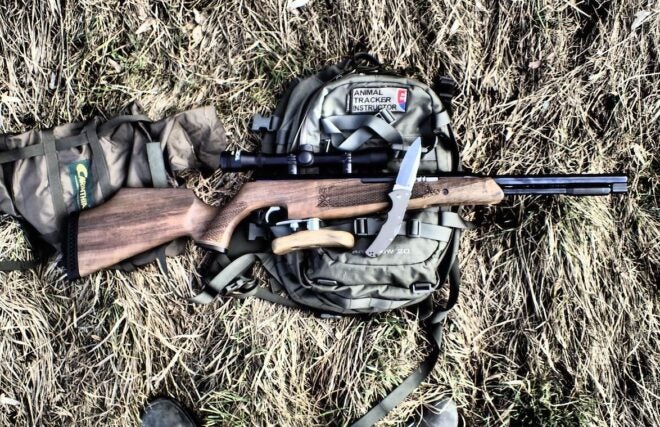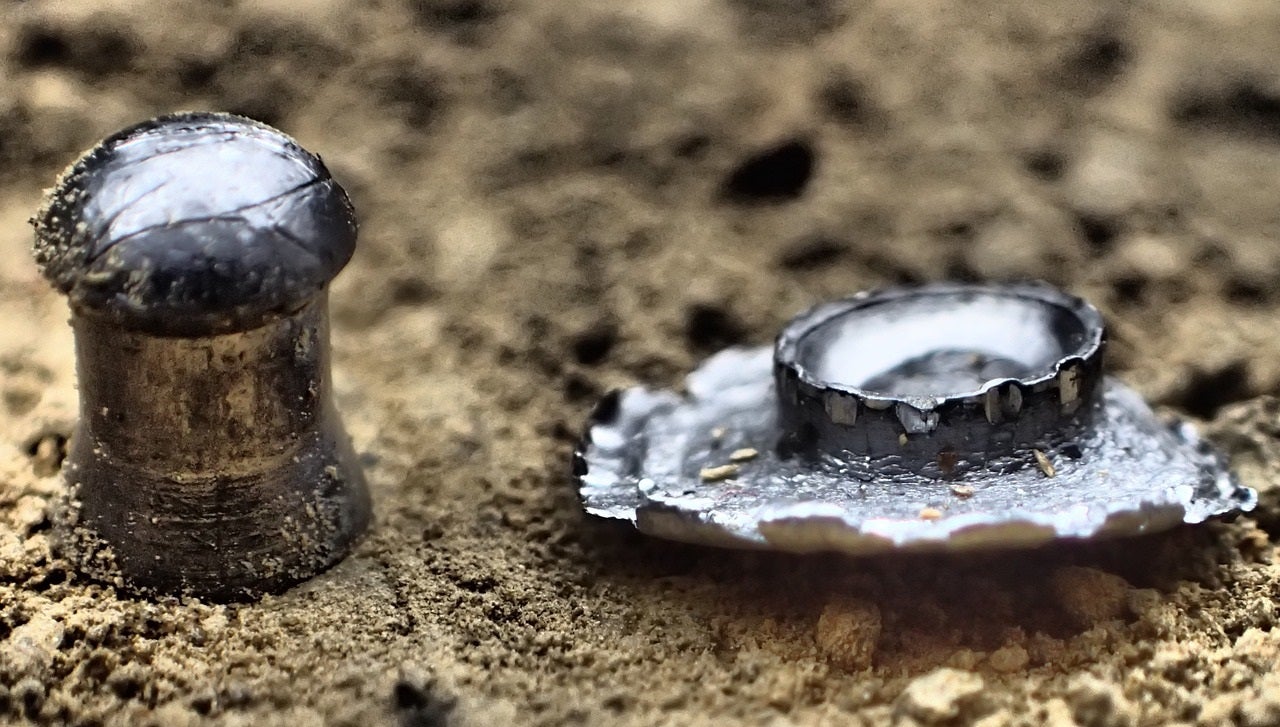A Beginner’s Guide to Air Rifles – Types, Velocities, and Hunting Capability
Travis Olander 08.28.23

We’re long past the days of pinging some soda cans in the backyard with a Daisy Red Ryder. Today, a quality air rifle – officially called a PCP, or pre-charged pneumatic, airgun – is capable of providing MOA accuracy and as much (if not more) power than a typical .22 LR-chambered rimfire rifle. But what’s the point? Why would you, loyal subscriber to all things powered by gun powder, ditch the primers and hammers for a can of compressed air and solid lead slugs? Well, here’s why: This is your beginner’s guide to air rifles.
Air Rifle Coverage on AllOutdoor
- Lucid Optics Ballistic Summit Part 3: A “Ton” of Air Rifles and Personality
- The New Benjamin Armada Semi-Automatic PCP Air Rifle
- New Bolt-Action Icon PCP Air Rifle from Crosman
- New Big-Bore PCP Air Rifle – The Benjamin Bulldog 457
What is an Air Rifle, Exactly?

An air rifle is an automatic (yes, really), semiautomatic, lever-action, or bolt-action rifle capable of firing solid metal projectiles using compressed air. The most powerful air rifles use a high-pressure canister that holds up to 4,500 PSI. Once the air canister is filled, the rifle can repeatedly fire rounds at consistent velocities before a recharge is required.
(What Air Rifles Are Not)
First: Air rifles are not considered firearms by any federal legal definition, nor by any wonky rule-making made up by the ATF. However, some states classify air rifles as firearms. Thankfully, just a few of the typical “no-fun-having” states maintain such laws: New Jersey, Rhode Island, Connecticut, Delaware and, strangely, North Dakota consider non-powder guns as either firearms or dangerous weapons.
Second: Air rifles are not smoothbore guns. Most modern airguns have rifled barrels.
Third: Air rifles are not toys. Some models — like the Benjamin Gunnar Lever Action above — can launch a .22-caliber slug at up to 1,000 FPS! That’s nearly as fast as the muzzle velocity recorded on a 40-grain .22 LR fired from an 18″ barrel. These kinda-sorta-firearms are no joke, and they should not be handled by anyone who isn’t familiar with the four golden rules of firearm safety. Air rifles are lethal. Treat them accordingly.
Types of Air Rifles
PCP rifles are, by far, the most popular type of airguns. But there are other air rifles that use different physical mechanisms to propel their projectiles:
PCP Air Gun

The kings of the air gun game, PCP (“pre-charged pneumatic”) rifles provide the most muzzle energy and velocity, and are capable of propelling big game slugs at lethal speeds. These guns require an external charge before use, which means investing in your own air compressor. But the tradeoff is the ability to fire dozens, even hundreds of rounds at blistering speeds.
CO2 Cartridge Air Guns

You’ve probably fooled around with a CO2 air gun in your youth — remember those shiny little canisters? That’s what powers these air rifles (and, more commonly, air pistols). Most CO2 guns are chambered in the smallest air gun rounds (.177 and .22), and, because of their lower velocities (500 to 600 FPS), they’re typically reserved for varmint, target shooting, and plinking.
Gas Piston Air Guns

Piston-powered air guns provide a great compromise for size, weight, and power: They’re capable of delivering up to 1,300 FPS, but they don’t require pre-charging a big air canister using an external air compressor, like those found on PCP guns. Piston guns are primed by compressing air inside a small canister, which is typically hidden inside the stock, foregrip, or action. The air rests drives a piston which, when released, slams forward and propels the round down the barrel.
Spring Piston Air Guns

Often called “break barrel” guns, spring piston air guns use a powerful spring to drive the piston. These rifles are favored for their consistency and easy priming — once you break the action, load a round, and lock the action back up, you’re ready to fire. That’s because the piston is automatically primed after loading, and no repetitive charging by hand is required. Spring piston air guns certainly hold their own against the mammoth power of a PCP gun: These single-shot assemblies are capable of sending a .22 round up to 1,000 FPS.
Typical Air Rifle Muzzle Velocities
Most high-capacity air rifles can send a lead slug downrange at 900 to 1,050 FPS. There are some small-caliber (.177) rifles capable of getting light alloy slugs up to between 1,300 and 1,650 FPS. But those rifles sacrifice capacity by expelling as much air as possible to accelerate a single shot.
What’s an Air Rifle’s Effective Distance?
Air rifle rounds simply don’t have the mass or ballistic coefficient to travel as far as regular ole’ bullets. With a typical rifle, you can expect solid groupings at 50 to 65 yards in low wind. Larger caliber airguns can afford hunting-worthy accuracy at 80 to 100 yards. But you’ll be hard pressed to find any airgun capable of going further.
Air Rifle Ammo: Muzzle Energy
Small calibers, like .177, will yield between 13 and 27 ft. lbs. of muzzle energy. But large calibers are capable of delivering some serious knockdown power. In the land of air rifles, you’ll often see “FPE”, or “foot pounds of energy” listed as a measure of performance. This is just another way of describing muzzle energy, which you’ll often see described as “ft. lbs.” in the land of traditional firearms.
The most powerful air rifles (they’re chambered in .50 or .72 cal) are capable of delivering up to 1,500 FPE at the muzzle when firing 850-grain slugs. That’s about 200 grains more mass than a .50 BMG cartridge. For additional context, a 340-grain +P+ round fired from a .44 Magnum revolver yields about 1,500 FPE. We’re talking about some air serious power, here.
What Can I Hunt With an Air Rifle?
Plenty of hunters have taken American game – deer, elk, even bear – using PCP airguns. Most hunters pursue small game and varmint with air rifles, though. Now that you’re convinced you want one, check out our top picks for air rifles!
